88%
Percent of Los Angeles’s 2015 water supply pumped from over 200 miles away
Americans have frequently approached the environment as something to be harnessed and controlled. Massive infrastructure projects within the Ten Across region have resulted in the merger of the natural and man-made. As the unintended consequences are exposed, our responsibility to future generations multiplies.
Los Angeles depends on water imported from remote locations. Aging aqueducts across active fault lines place the nation’s second largest city in a precarious position that tests our capacity to confront knowable risk.

Percent of Los Angeles’s 2015 water supply pumped from over 200 miles away
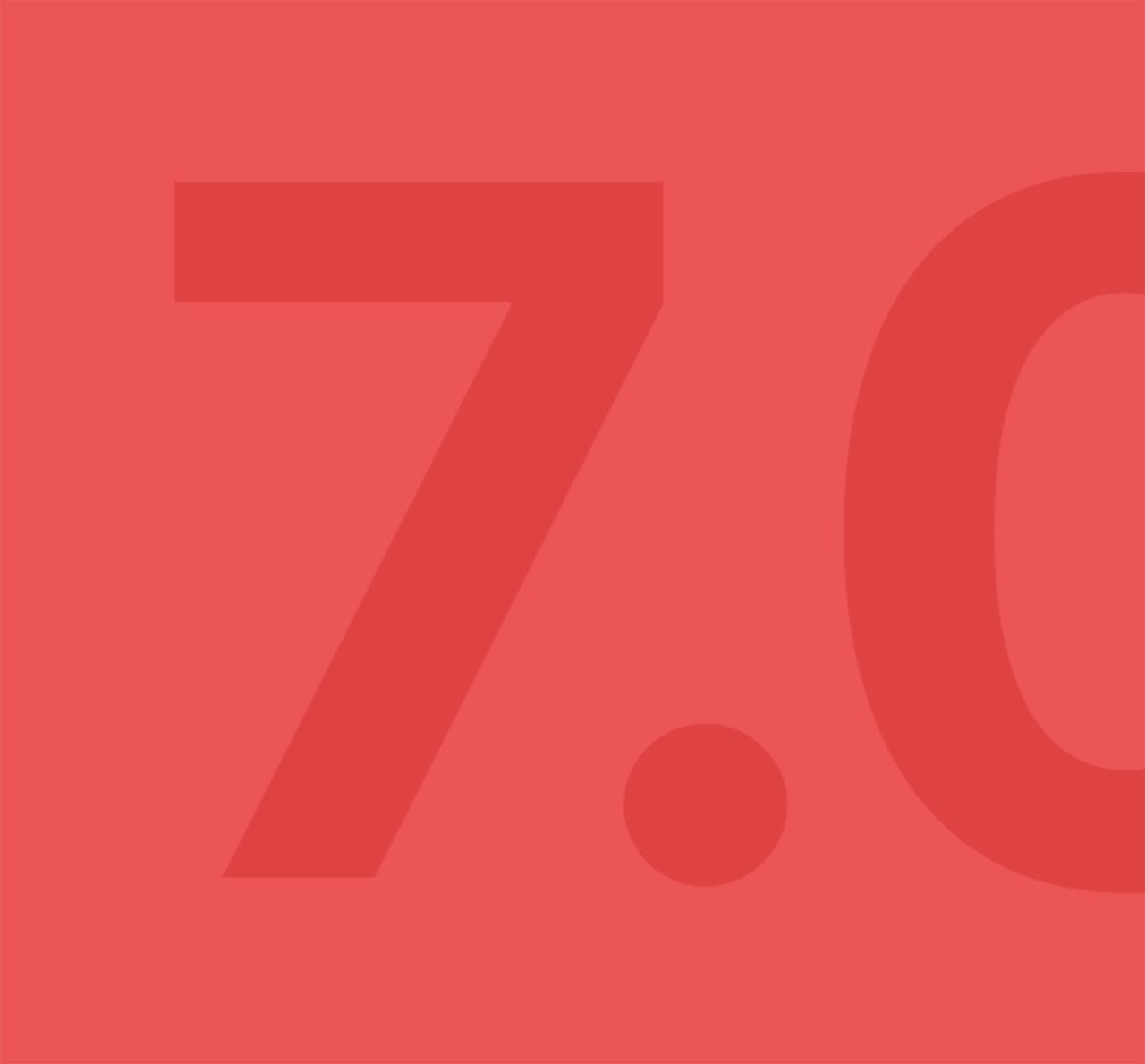
Probability of one or more magnitude 7.0 or greater earthquakes striking California, 2014-2044
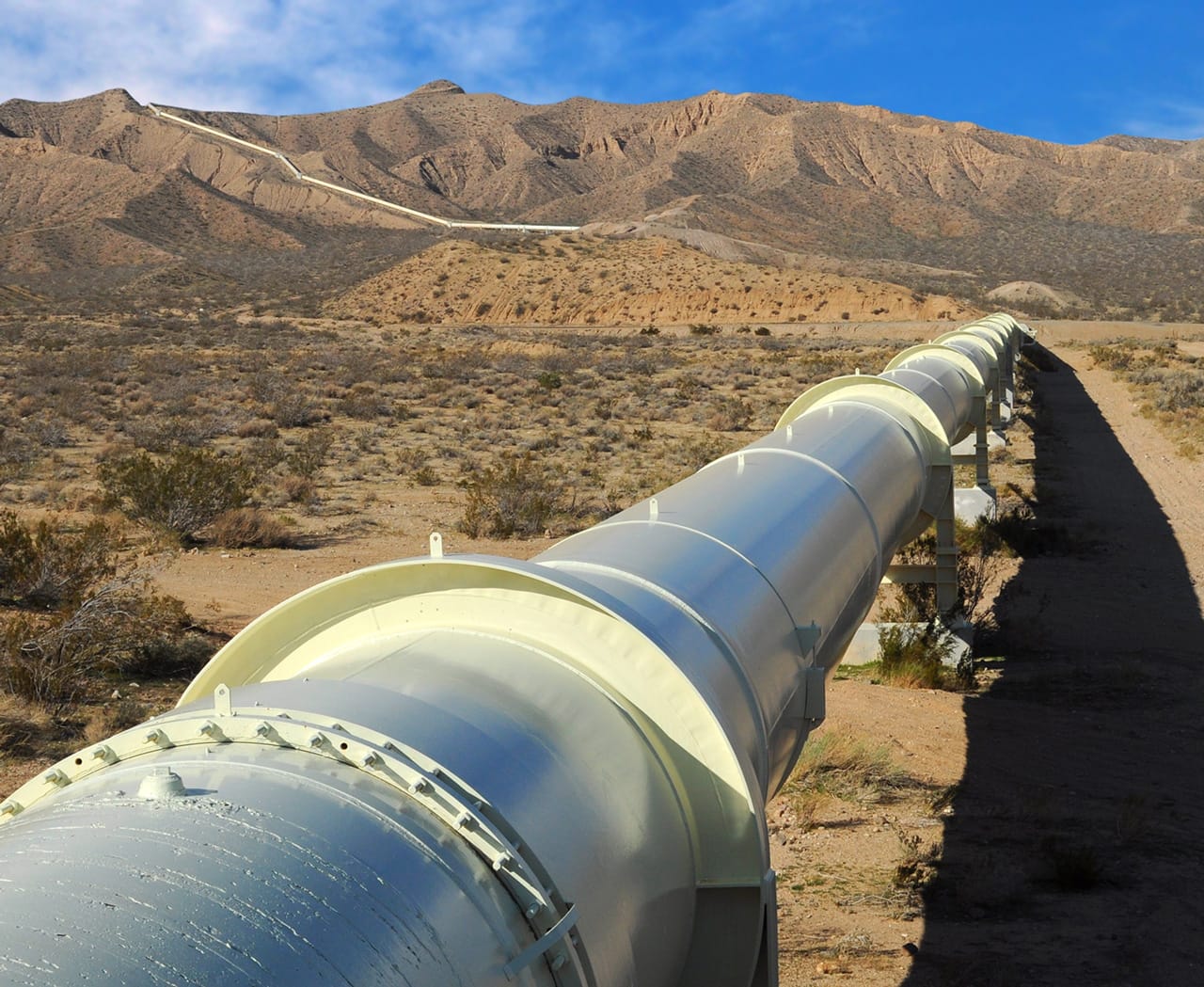
California wildfires have grown more devastating, with 2020 on record as the most active fire year in history for the West Coast. Trendlines point to the necessity of a response commensurate with the risk.
Increase in number of square miles burned annually since 2000 across western U.S. compared with the 1950-2000 average
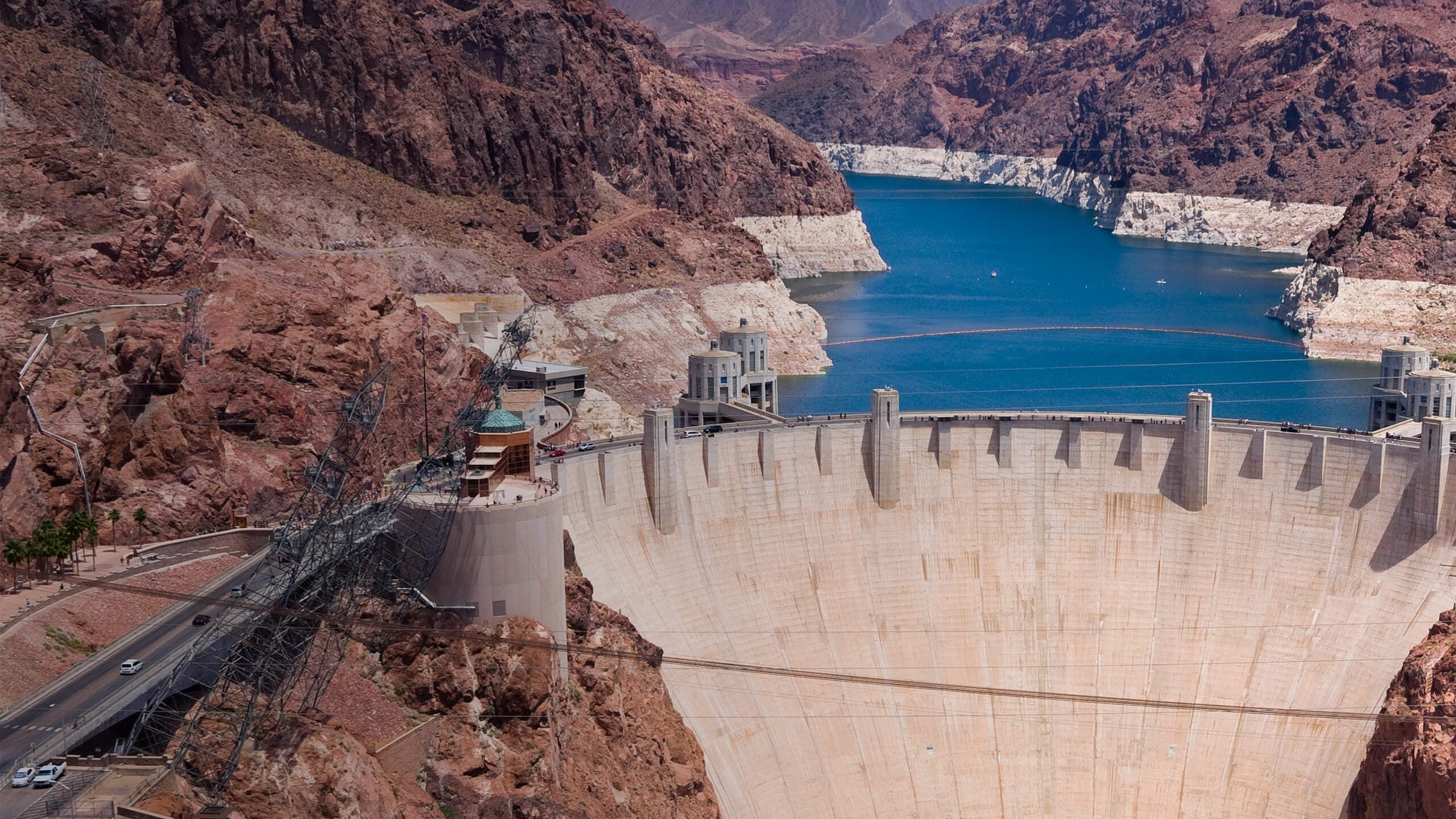
The Colorado River water supply was overstated from the start. In 2020, Lake Mead reservoir levels were just nine feet away from triggering emergency restrictions to many of the 40 million people across seven states who depend on it.
Can the Colorado River keep on running?, National Geographic, August 3, 2020.
Current reservoir level as of Aug 2020
Source Lake Mead Annual High and Low Elevations (1935-2019). U.S. Bureau of Reclamation, 2019.
Reservoir level to trigger first emergency restrictions
Source Lake Mead Annual High and Low Elevations (1935-2019). U.S. Bureau of Reclamation, 2019.
Reservoir “Deadpool” status
Source Lake Mead Annual High and Low Elevations (1935-2019). U.S. Bureau of Reclamation, 2019.
Phoenix’s tally of 103 days over 100° in 2019 was exceeded by 39% in 2020. Weather records normally fluctuate within a limited range. Such a drastic leap suggests change on an unprecedented scale.
Triple digit temperatures in 2020
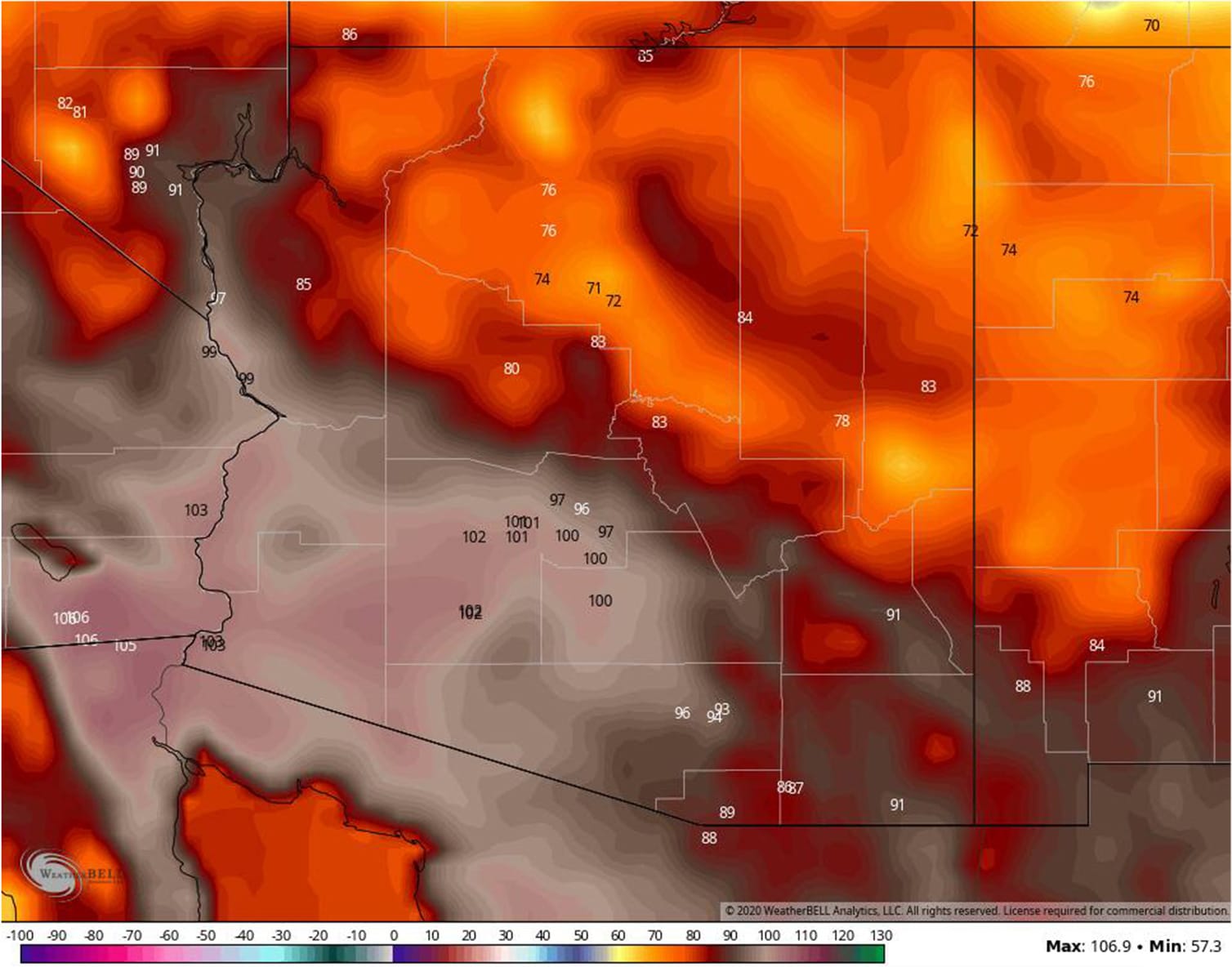
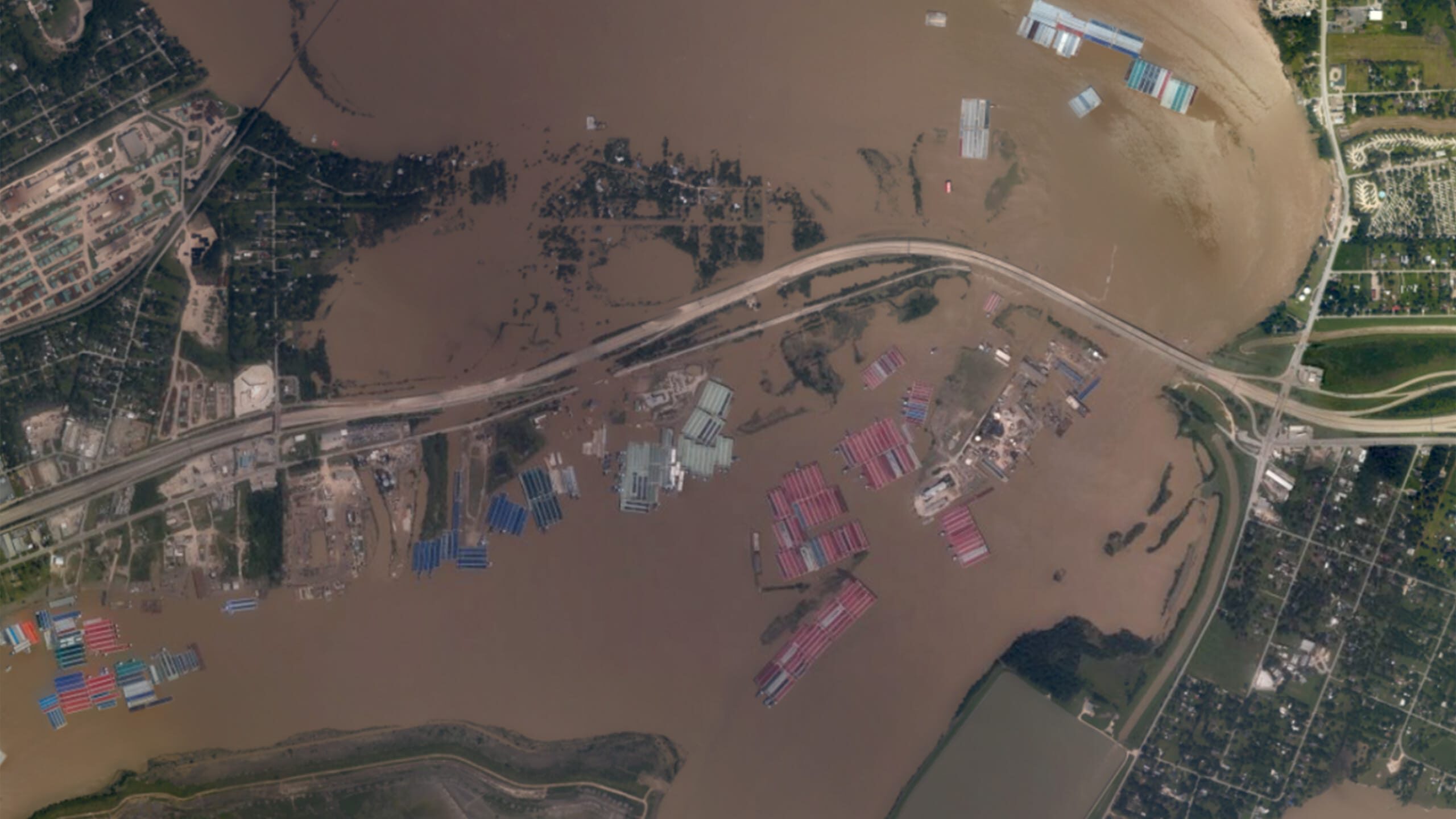
The Houston Ship Channel is a national asset subject to profound vulnerability. Worsening storm surges threaten not just the environment and the 3.2 million jobs dependent on this infrastructure, but the entire U.S. energy supply chain.
residents at risk from hazardous petrochemical spills in a major storm surge
Source Houston Ship Channel Economic Impact Study to U.S. is Released. Port Houston, Apr. 23, 2019.
Courtesy NOAA ERMA, Aug. 31 2017
A great city rising at the mouth of the Mississippi River was inevitable, but required overcoming hostile environmental conditions. Urban expansion now exposes 50% of the city to flooding.
Why New Orleans is Vulnerable to Flooding: It’s Sinking. CNN (Ryan Prior), July 11, 2019.
Distance some New Orleans neighborhoods have sunk since the city’s founding
Source How Humans Sank New Orleans. The Atlantic (Richard Campanella), Feb. 6, 2018.
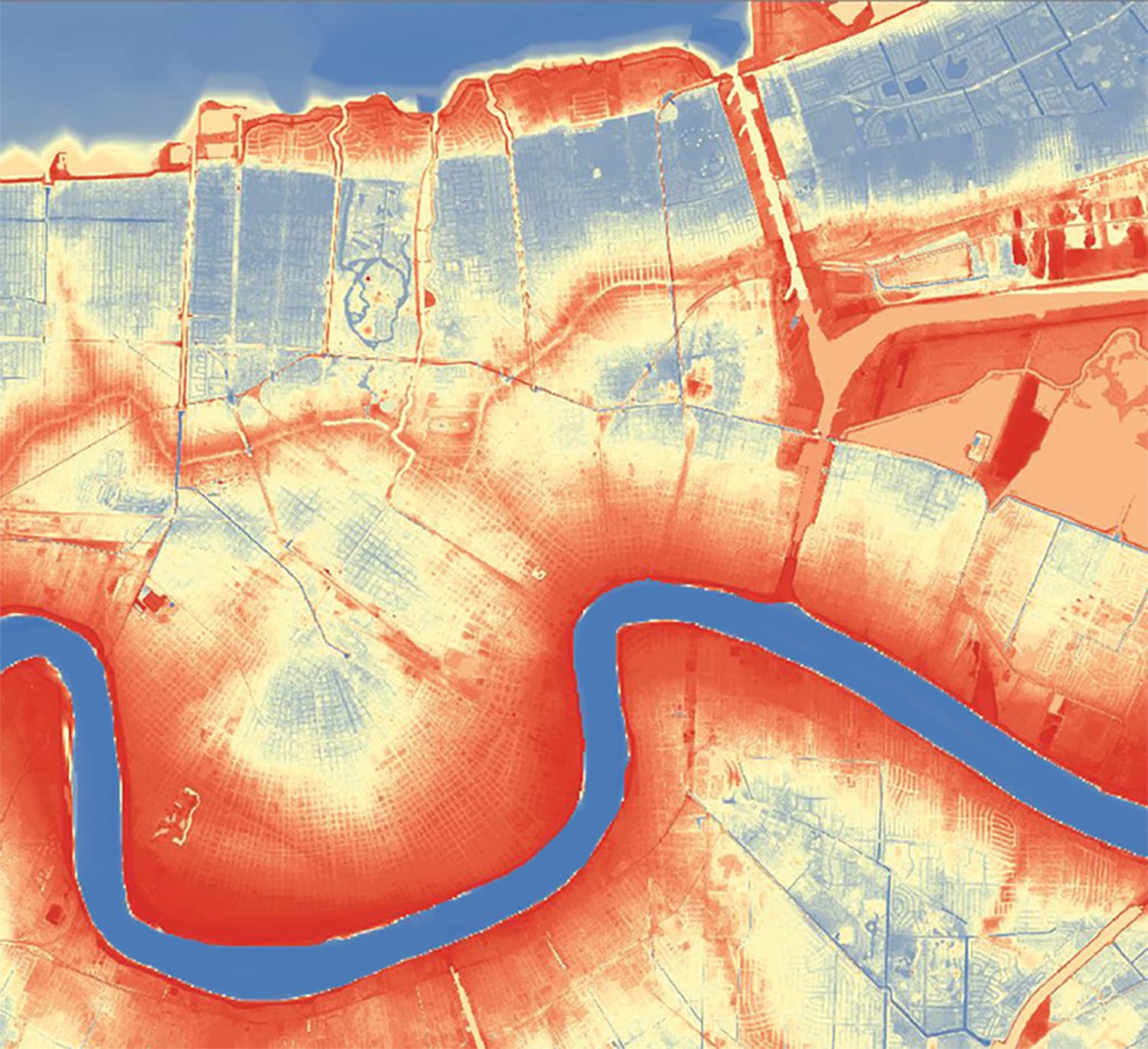
A LIDAR elevation model of New Orleans shows areas above sea level in red tones (up to 10 or 15 feet, except for the artificial levees) and areas below sea level in yellow to blueish tones (mostly ranging from -1 down to -10 feet). (Richard Campanella / FEMA)
The one-two punch of sea level rise and growing storm intensity will be felt most keenly in Florida, where more than beachfront properties are threatened by chronic flooding. How long can Florida continue to build 50% of new homes in flood risk zones?
Ocean at the Door: New Homes and the Rising Sea. Climate Central and Zillow, July 30, 2019.
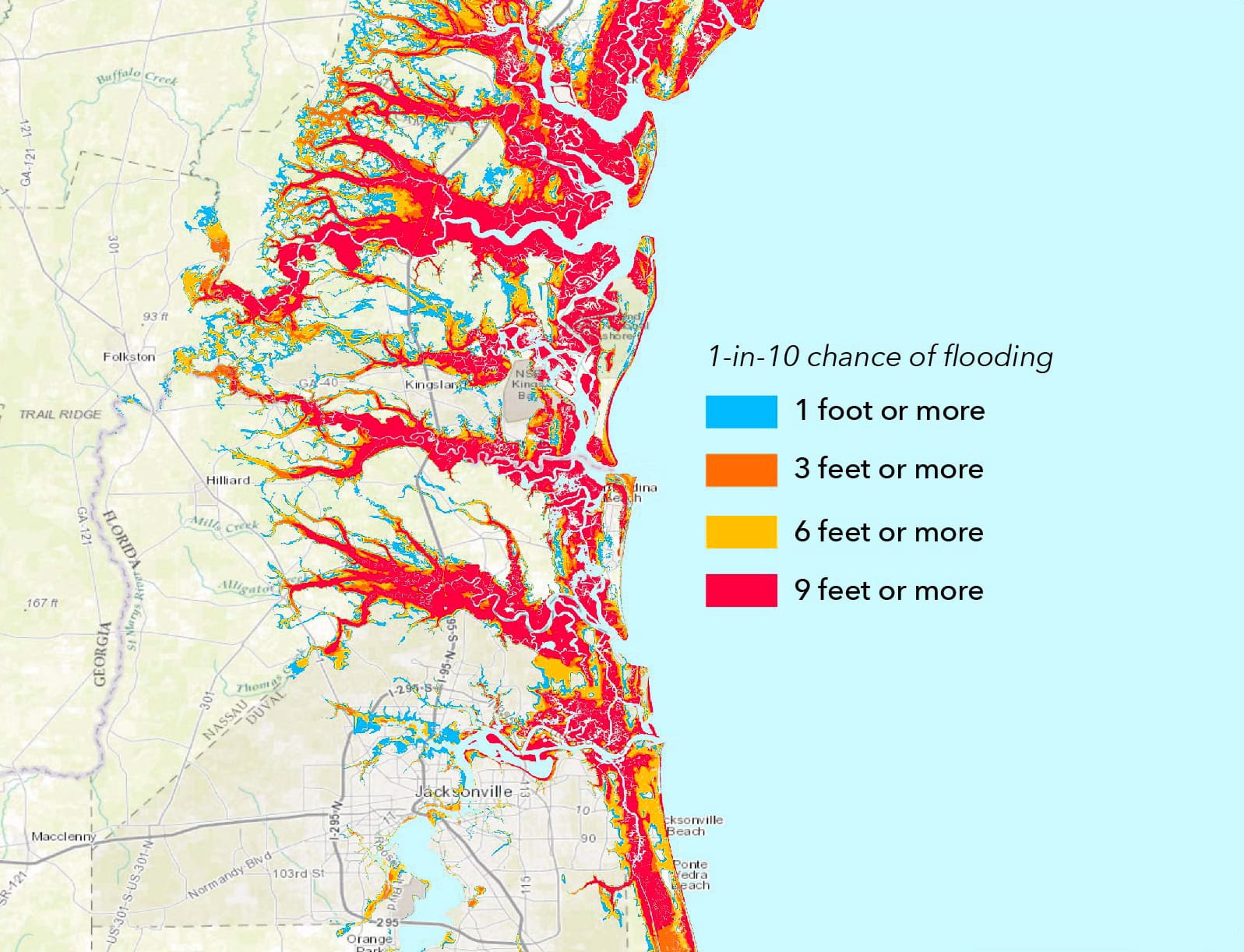

Number of Jacksonville homes projected to be inundated yearly by flood events by 2100 with unchecked emissions